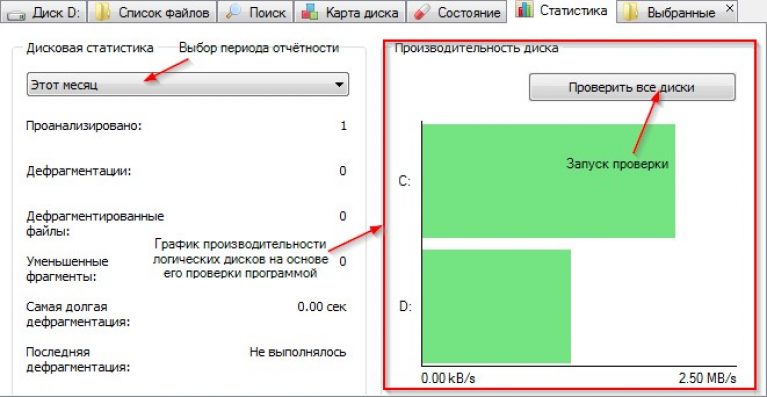Disk defragmentation - Simple ways to speed up your system
The performance of most programs and the entire system as a whole largely depends on the settings and condition of the hard drive, so every PC user should know how to defragment the disk.
One of the factors affecting the performance of a computer's permanent memory is fragmentation - the division of parts of executable files into many segments, as a result of which the process of reading them slows down.
To eliminate this phenomenon, it is necessary to regularly carry out a defragmentation procedure, which moves individual blocks of program files into one row.
This process is completely automatic, and the user only needs to set a few initial settings.
This program, firstly, has no serious limitations for the free version, and secondly, it consumes few system resources, which makes it one of the leaders in this segment.
- After the first launch of the program, it is recommended to translate it into Russian, which will facilitate further work. To do this, select Setting in the top panel, then Options and set the required language.
Defraggler's main window is divided into three vertical zones. The top one contains information about logical drives and their characteristics. The average clearly demonstrates the degree of fragmentation of the selected disk.
And the bottom one contains several tabs with all sorts of options, which contain data about various aspects of the hard drive and provide tools for working with it.
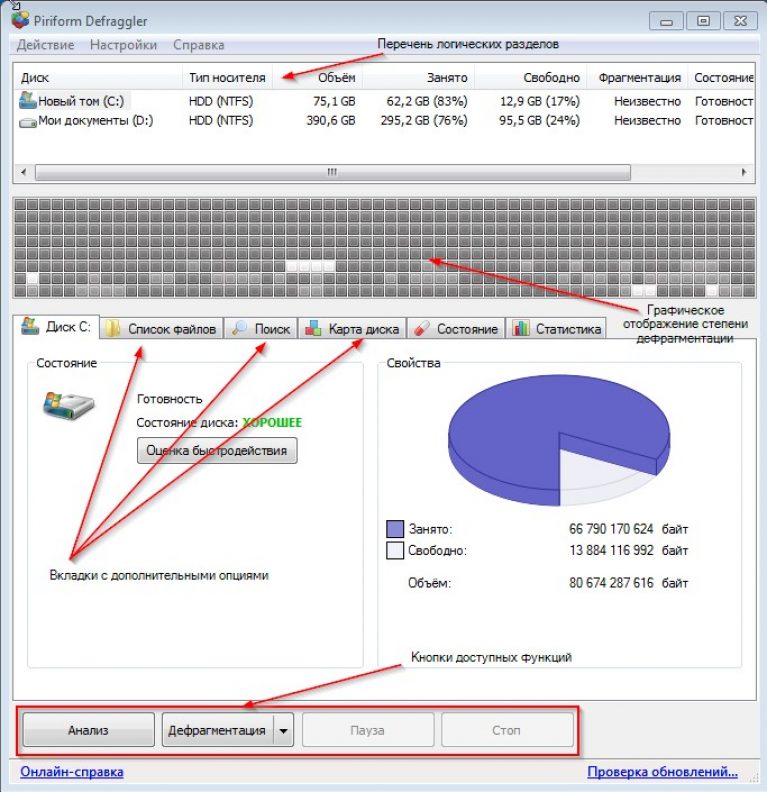
- Now let's take a closer look at each of the tabs. The first of them is the name of the drive that is currently selected from the list at the top of the main window. The amount of used/free memory is displayed on the right.
And on the left there are keys for launching a benchmark test (performance assessment) for the disk.
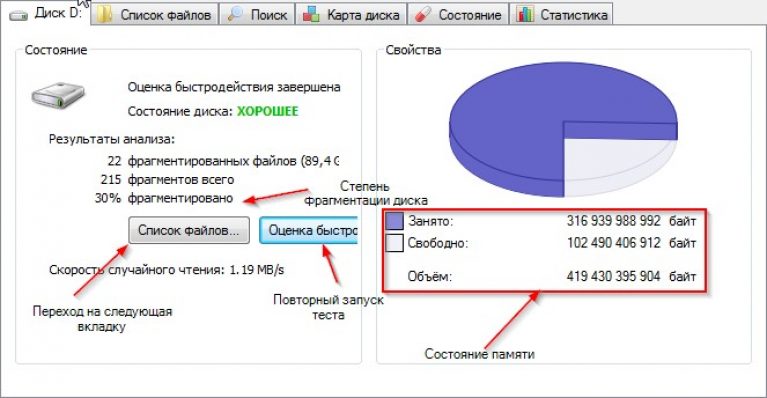
- In the next tab you can see a list of files located on the disk and sort them according to various criteria. And also conduct a selective analysis of each file to determine the degree of “spreading” across the section.
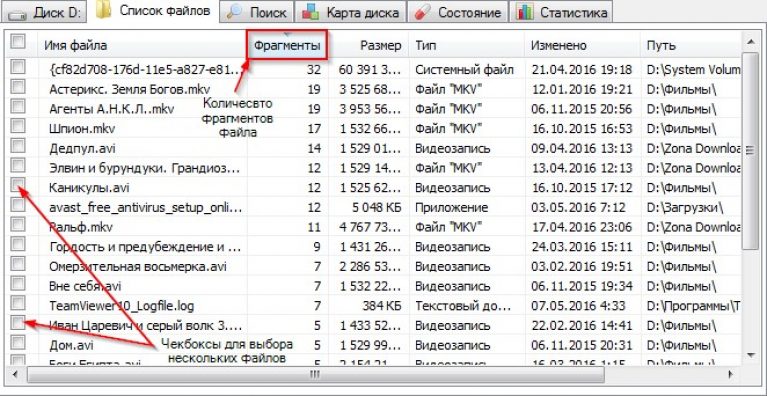
- The third tab allows you to search for files by name or size. This can be useful if you need to defragment individual important system files.
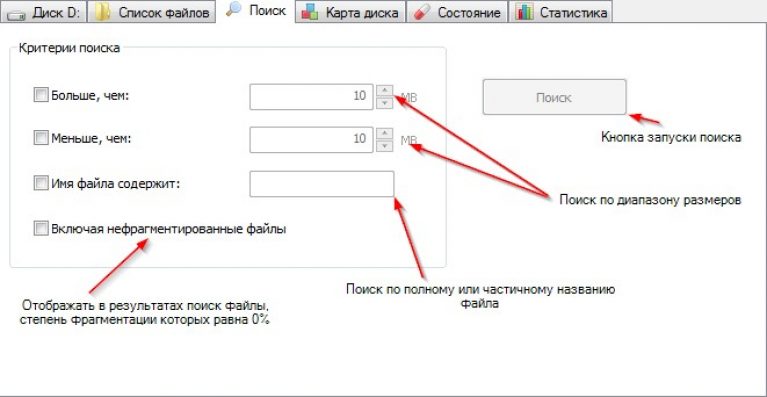
- On the Disk Map tab, you can see the legend (decoding of the symbols) of the defragmentation map, located in the middle of the main window.
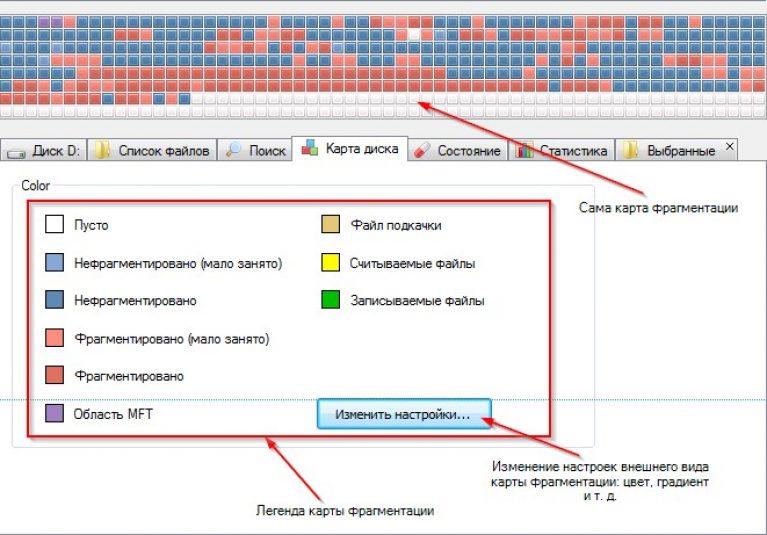
- The Status tab displays all kinds of technical parameters of the hard drive, such as temperature, serial number, number of read errors, etc.
In order to fully understand what these numbers mean, the user will need to carefully study the technology of the structure and operation of hard drives.
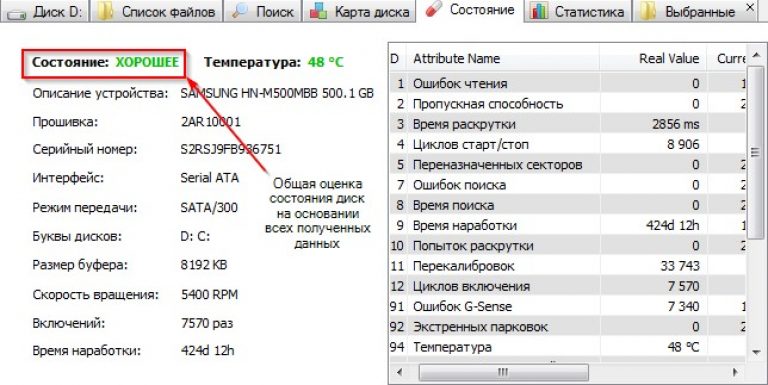
- The last tab contains statistical information about all file system ordering procedures performed using Defraggler.
